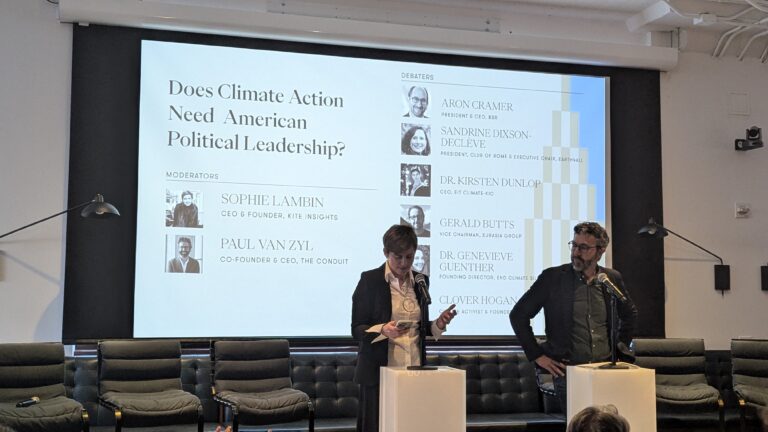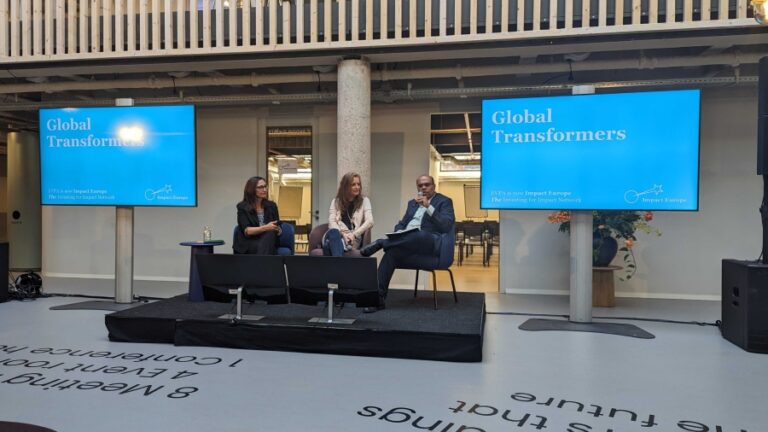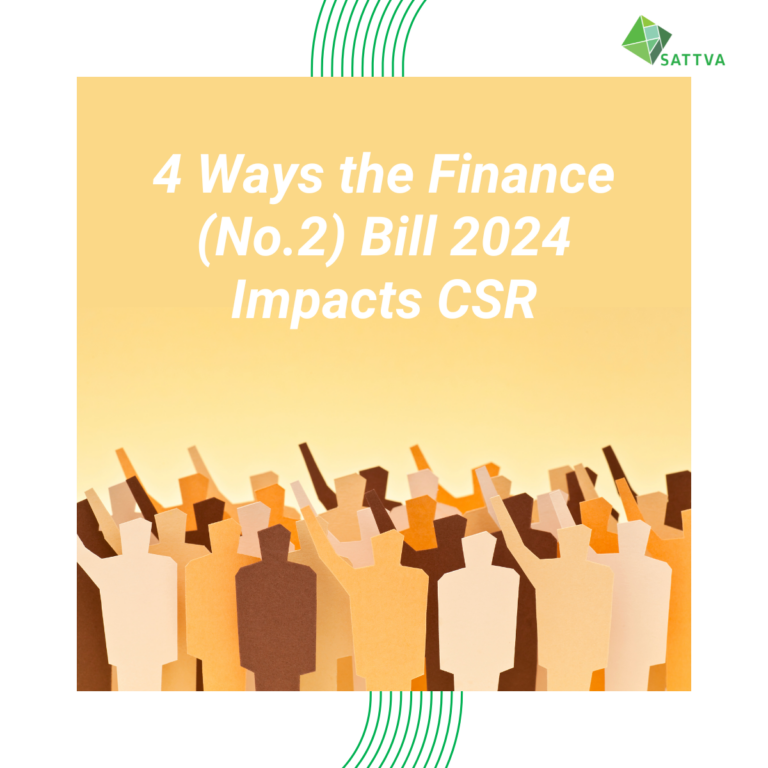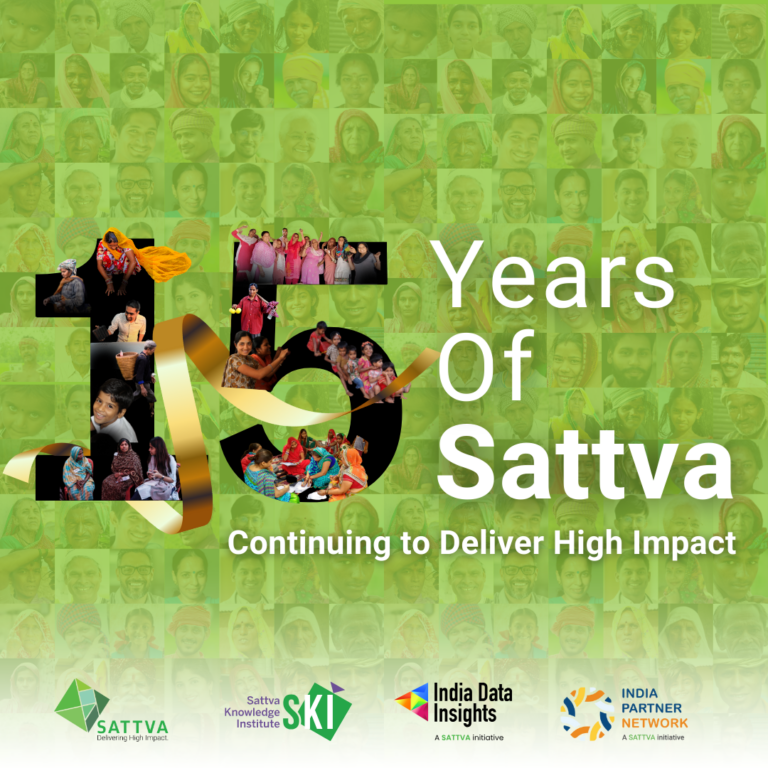About the Education Circle
In light of the impact of COVID-19 crisis on children’s education across the country, the Education Circle was created as a voluntary collective of non-profits to:
– Identify high priority focus areas for the ecosystem to reimagine a new normal of education transformation
– Identify actionable solutions and approaches that can be deployed by government at scale
– Enabling on ground transformation of the solutions by the practitioners
The non-profits which are part of the Education Circle work across multiple states in India and collectively impact more than 5 million children. The nonprofits engage teachers, community, parents, children, government, and other NGOs to execute various kinds of interventions focused on education such as training, capacity building, content development, building life skills and advocacy.
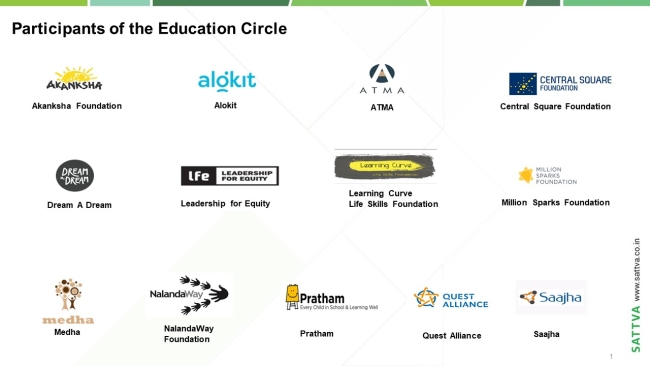
Key Priority areas for Re-Imagining Education in the New Normal
Over the last 6-8 weeks, Sattva facilitated the Education circle with 13 nonprofits and practitioners organised as 3 Working Groups wherein they collectively problem-solved for reimagining education for children in the new normal. The outcomes notes of the Working Groups are intended for use by the government for enabling policy action as well as for the ecosystem practitioners for on-ground action.
Return to School – Guidelines for planned reopening by enabling preparedness of schools and stakeholders
In light of the COVID-19 pandemic, “Return to School – Guidelines for planned reopening by enabling preparedness of schools and stakeholders” aims to support the planning of school reopening by creating stakeholder centric strategies for ensuring maximum return of students to schools safely.
CLICK HERE FOR THE VIDEO ON A FRAMEWORK FOR RE-OPENING OF SCHOOLS
Technology based blended education delivery for children
This outcome note highlights the challenges faced by the children during the pandemic due to unplanned emphasis on technology driven education and recommends a framework for blended learning approach to strategically prepare schools to face any such disruptions in the future.
CLICK HERE FOR THE VIDEO ON A FRAMEWORK TO DESIGN BLENDED LEARNING MODELS
Reimagined Learning Framework – a practitioner lens to future of learning in post COVID world
Through this outcome note, the practitioners emphasise that the objective is not only to enable return of children to schools but to redefine the curricular and pedagogical elements of effective institutional education. The participants of this Working Group of the Education Circle have co-created a learning framework to provide a foundational base to upcoming pilot models in school by both the government bodies and the ecosystem.
CLICK HERE FOR THE VIDEO ON A FRAMEWORK FOR RE-IMAGINED LEARNING
As we come to the end of the video series, we would like to take this opportunity to thank all the participants of Education Circle, who came together to leverage their expertise and on-ground insights to re-imagine education in the new normal through actionable solutions to be deployed at scale. While each discussion was very immersive and rigorous, we would like to share a few key takeaways from the discussions:
1. Role of stakeholders– Role of Parents was discussed thoroughly and they must be treated as co-educators to support their child learning. The framework shared in this outcome note will support the government’s plan and effectively reopen school with maximum return of students to schools safely.
2. Delivery model & shift to tech based learning – Effective delivery model for all types of technology models was discussed and special attention was given to scenarios with low accessibility. The group also listed down ways to ensure tech-driven education delivery can be sustainably and effectively implemented.
3. Focus on well being and holistic learning– Traditional classroom methods are not enough, and the introduction of National Education Policy 2020 has advocated for reformation in the learning systems and processes followed in the Indian education system. The framework can help educators and the government alike in reforming our learning systems to enable holistic development of children and help them better navigate demands of the coming future.
—————————-
Sattva has been working with various non-profits and social organisations as well as corporate clients to help them define their social impact goals. Our focus is to solve critical problems and find scalable solutions. We assist organisations in formulating their long-term social impact strategy by strategically aligning with business to provide meaningful solutions to social issues.
If you have any such stories or ideas to share, please write to us: impact@sattva.co.in

